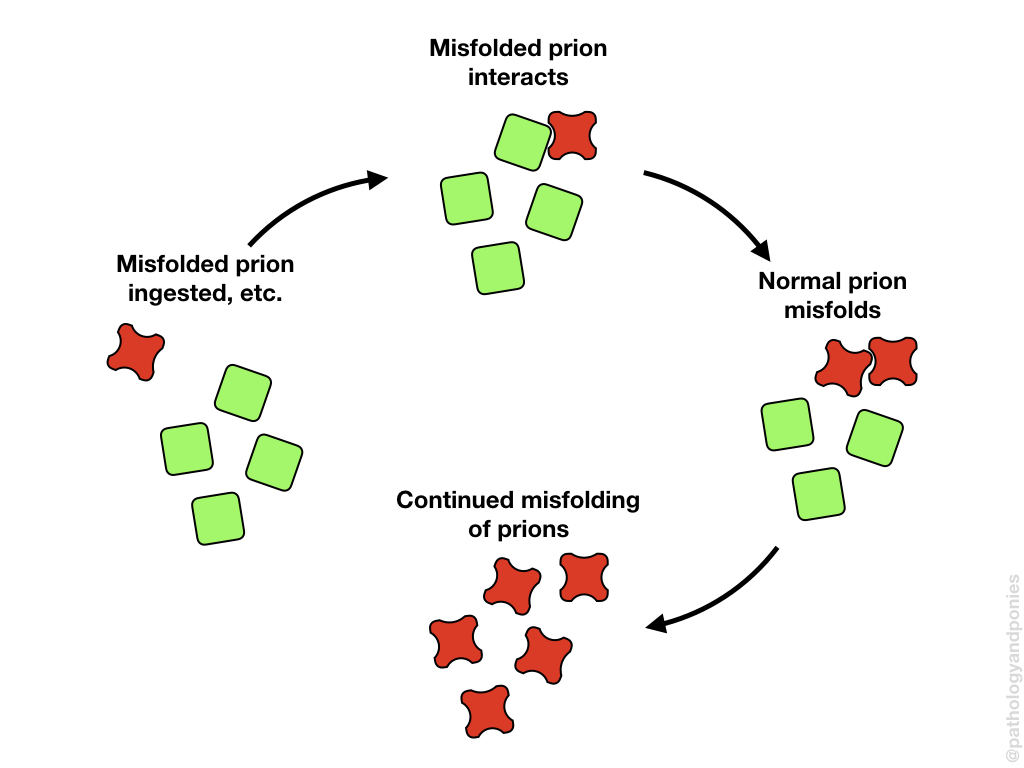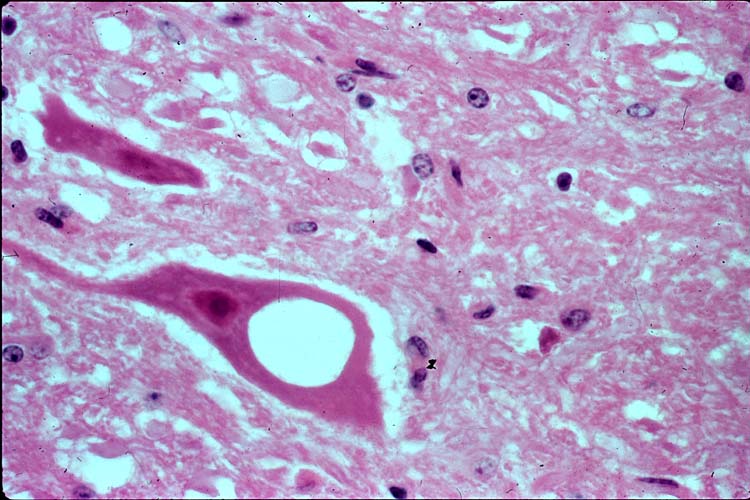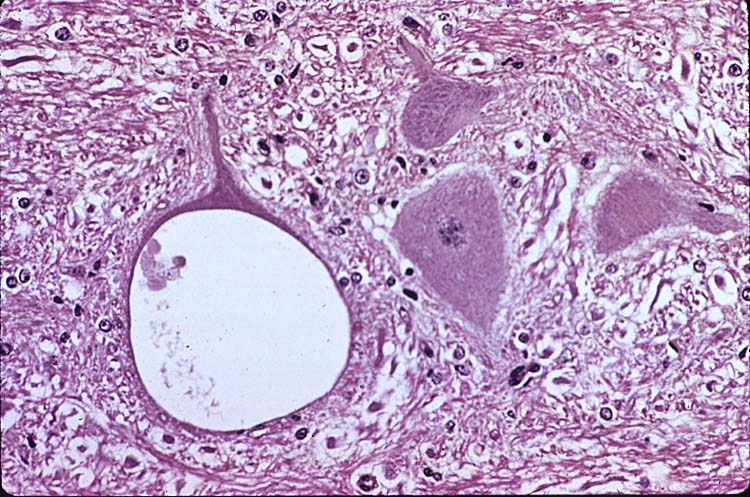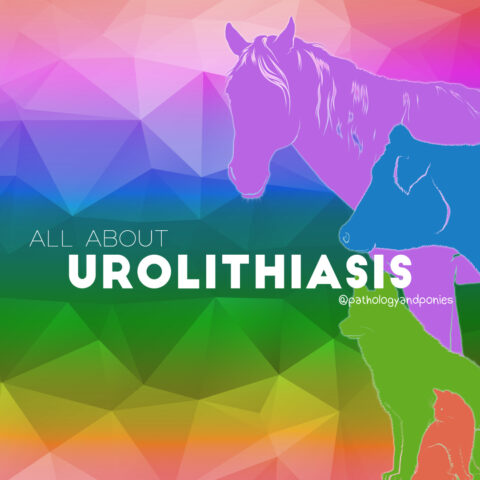
We’ve hit 1500 followers on Facebook! 🎉 This week’s posts will be all about how different kinds of pathogens (disease-causing agents) actually cause disease. Today’s post is on bacterial infections!
What are prions?
Well, the answer is we don’t quite know! What we do know is that prions are proteins. Yup, that’s all they are! We don’t know what their exact function is, but they are a normal structure found around on the cell membranes of neurons. We think they might be used in the cell’s response to oxidative stress, or the damage that occurs with aging.
How are prions infectious?
As mentioned, a prion is just a protein! And they’re found on normal cells. So how can it be infectious? Well, sometimes these prions get misfolded, meaning they have a bit of a different shape than their normal neighbours. Somewhat strangely, one misfolded prion has the ability to induce misfolding in neighbouring prions, creating a cascade event where suddenly numerous prions are misfolded.
But all that doesn’t really explain how a prion disease can be infectious. Well, ingesting, inhaling or otherwise encountering just one of these misfolded prions from the environment can cause prions in an otherwise normal animal to misfold. Again, this results in a cascade of misfolding, and soon many prions are misfolded. Wild!
How do misfolded prions cause disease?
These misfolded proteins cause damage to their associated neurons, leading to disease in the nervous system. The most remarkable type of damage is vacuolation (holes forming) in the neurons, which can be seen under the microscope. Obviously, neurons aren’t supposed to have holes in them, so we often see clinical signs like ataxia (wobbly gait), involuntary movement, paralysis, coma and even death. Some example prion diseases include bovine spongiform encephalopathy (mad cow disease), chronic wasting disease in deer species, scrapie in sheep and Creutzfeldt-Jakob disease in humans.


Sources
Engleberg NC, DiRita V, Dermody TS. Schaechter’s Mechanisms of Microbial Disease, Fifth Edition. Lippincott Williams & Wilkins 2012.
Zachary JF. Pathologic Basis of Veterinary Disease, Sixth Edition.
Photos 1, 2 © Noah’s Arkive contributors King licensed under CC BY-SA 4.0.




